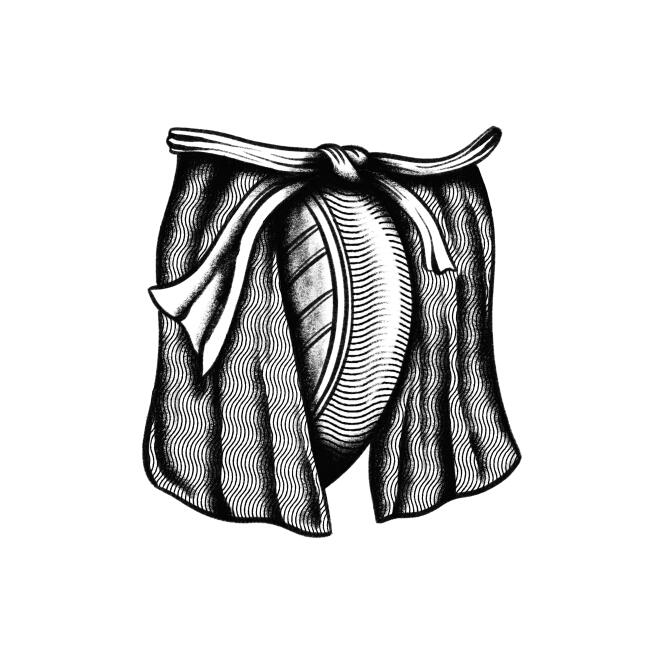Closed fist on the hip, conceited gaze, open legs and shoulders so big that the sovereign appeared as wide as he was tall: Henry VIII is nothing if not imposing in the painting by Hans Holbein the Younger of 1537, a year after the king of England had his wife Ann Boleyn beheaded. No need for a sword, a crown or a scepter, the center of power seemed to focus on a different attribute: his codpiece. Long concerned about not having any male offspring, His Majesty wore it "supposedly well-filled," in a bid to impress.

The painting, which disappeared in a fire in 1698, but of which numerous copies have been made to ensure its fame, appeared as the most famous representation of a clothing accessory widely promoted by the Renaissance. The 16th century was the scene of a revolution in men's clothing – it was no longer suitable for men of nobility to wear dresses. Socks, which covered the legs, and breeches, a type of bloomers topped with a piece of fabric that became a fly, gained popularity. The term ("braguette") was derived from the braies, "floating" or more fitted pants worn by the Gauls in particular.
This "closer to the body" type of fashion encouraged the male gender to equip themselves with a protuberance that was meant to be suggestive, inspired – as in the case of Henry VIII – by the protective bulb of the crotch, visible on the armor. For some historians, the king's proud posture showed that the prestige of the powerful was no longer linked to the ability to make many children, but to their number of female conquests.
Hiding place for a weapon
The codpiece was studded with pearls, embroidery, ribbons, lace or horsehair, encased in leather or a metal shell, padded with fabric or wool. Its generous size allowed it to be used as a purse, a glove box, a hiding place for a parchment or even a weapon. Some even went as far as to store fruits to ripen in it.
The proud highlighting of the King of England's crotch conquered Europe. Emperor Charles V requested an XXL-sized codpiece from Titian who did his portrait. Many others did the same and common people also followed suit. The peasants in Brueghel the Elder's "Wedding Dance in the Open Air" (1566) sported a curious penis encasement. Michael Glover, renowned art critic for The Independent, mocked "an artificialized, even romanticized representation of the male body." In short, a fabrication. The philosopher Montaigne was already offended by the wearing of an accessory that he considered "vain and useless."
This fashion trend faded away in the last years of the 16th century. A few centuries later, the codpiece emerged again, as seen on Malcolm McDowell in A Clockwork Orange, the Clone Troopers of Star Wars – or some boy band singers of the 1980s, who would hide a badminton shuttlecock "down there" before going on stage.
You have 2.09% of this article left to read. The rest is for subscribers only.